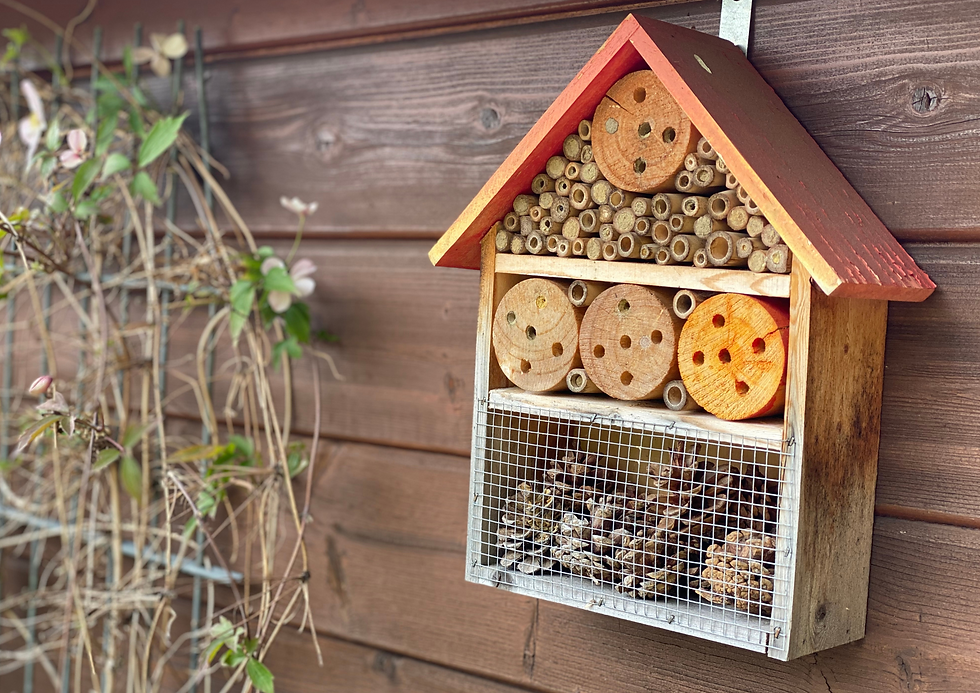☀️ Here Comes the Sun: Why Solar Power Is Lighting the Way to a Greener Planet
- Bonita Labuschagne
- Jul 21
- 3 min read
Ever looked up on a sunny day and thought, “Wow, the sun is just... doing its thing, for free?”
Well, what if we told you that warm sunshine isn’t just great for beach days and vitamin D—it’s also one of our planet’s best tools for fighting climate change?
Let’s talk about solar panels—what they do, why they matter, and how they’re helping us move toward a brighter, cleaner future.

Wait, What’s a Carbon Footprint?
Before we dive in, here’s a quick sneak peek at a term we’ll be exploring more in a future blog: carbon footprint.
Your carbon footprint is the total amount of greenhouse gases (like CO₂) released into the atmosphere because of your activities—driving, shopping, heating your home, eating imported strawberries in winter… you get the idea.
The higher your footprint, the more pressure we’re putting on the planet.
The goal? Shrink it down.
And one powerful way to do that? You guessed it—go solar.
So, What Do Solar Panels Actually Do?
Solar panels capture sunlight and convert it into electricity. No oil. No coal. No pollution. Just pure sunshine doing all the hard work.
They can power your home, your business, your farm, or even your camper van. They’re silent, efficient, and get this—you can even make money by feeding unused energy back to the grid.
Why Solar Rocks for the Planet (And Your Wallet)
Here’s why solar panels are more than just shiny roof bling:
They reduce your carbon footprint by replacing fossil fuel energy with clean, renewable energy
They save money over time (your energy bills drop, and some countries offer rebates or tax credits)
They require little maintenance (a quick wash now and then is often enough)
They’re reliable—even on cloudy days, they still generate energy
And yes, installing solar can be expensive upfront… but think of it as a long-term investment.
It pays off—both financially and environmentally. In many places, the cost of solar has dropped dramatically in the past 10 years.
Are There Any Limitations?
Sure! Solar isn’t perfect. Some challenges include:
Initial cost – Installation can be pricey if you’re not eligible for rebates or subsidies
Space needed – You need enough roof or land space to install panels
Energy storage – If you want power at night or during outages, you’ll need batteries (which can be extra)
Weather dependency – Solar still works on cloudy days, just not as strongly
But as technology improves, these limitations are shrinking faster than your power bill!
Solar-Powered Farming is the Future (and It's Already Happening)
Yup, even farms are getting solar-savvy! 🚜☀️
From powering irrigation systems and machinery to running greenhouses, water pumps, and cold storage units, solar energy is helping farmers grow food with a much lighter footprint.
It’s called agri-voltaics—farming and harvesting energy from the same land. No trade-offs, just smart synergy.
Less pollution. More resilience. Happier soil
🚜 Real-World Farms & Projects Leading the Way
1. Sundrop Farms (Australia) A game-changer in desert farming. Sundrop uses solar power to desalinate seawater and grow tomatoes in the middle of the Outback. No soil, no freshwater, and barely any fossil fuels—just sun, science, and innovation.
2. Jack’s Solar Garden (USA) One of the first agri-voltaic research farms in Colorado. Crops like kale, carrots, and herbs grow beneath raised solar panels, which also shade the soil—reducing evaporation and helping the plants thrive in hot weather.

3. Giga Farms in India In rural India, small farms are using solar pumps to irrigate crops without relying on diesel generators or unstable grid electricity. It’s reducing both emissions and costs for farmers.
4. The Netherlands – Greenhouse Solar Roofs Dutch farmers are experimenting with transparent or semi-transparent solar panels on greenhouse roofs, generating electricity while letting in enough light for crops to flourish.
Industries Riding the Solar Farming Wave
Dairy & Livestock Farms – Using solar panels to power milking machines, water pumps, and lighting in remote areas.
Viticulture (Wine) – Wineries in places like California, Spain, and South Africa are running entire vineyard operations on solar.
Aquaculture – Fish and shrimp farms are now using solar to aerate water, run pumps, and cool storage units.
Real-Life Companies Using Solar Power
It’s not just homeowners jumping on the sunshine train—big brands are getting serious about solar too:
Google – They’ve committed to running on carbon-free energy 24/7 by 2030
Apple – Their global offices, stores, and data centers are already powered by 100% renewable energy
IKEA – Not only do they use solar power, they also sell solar panel kits for your home
Walmart – One of the biggest commercial solar energy users in the world
If the world’s biggest companies can do it, so can we



Comments